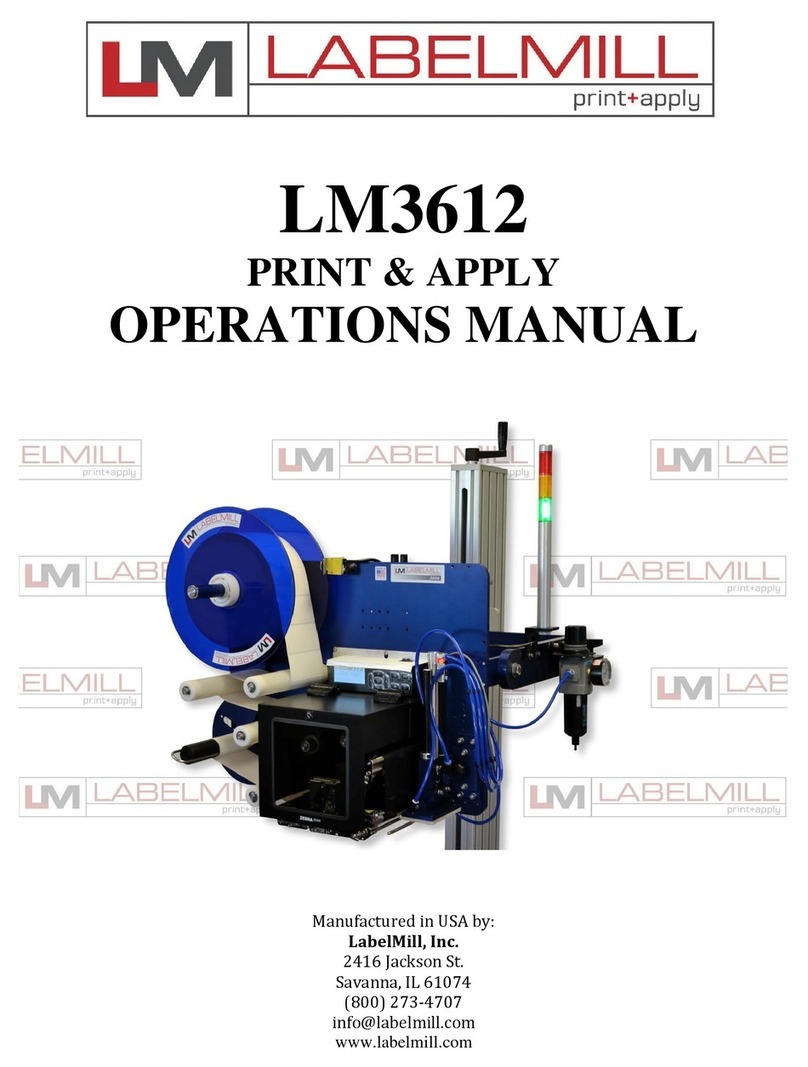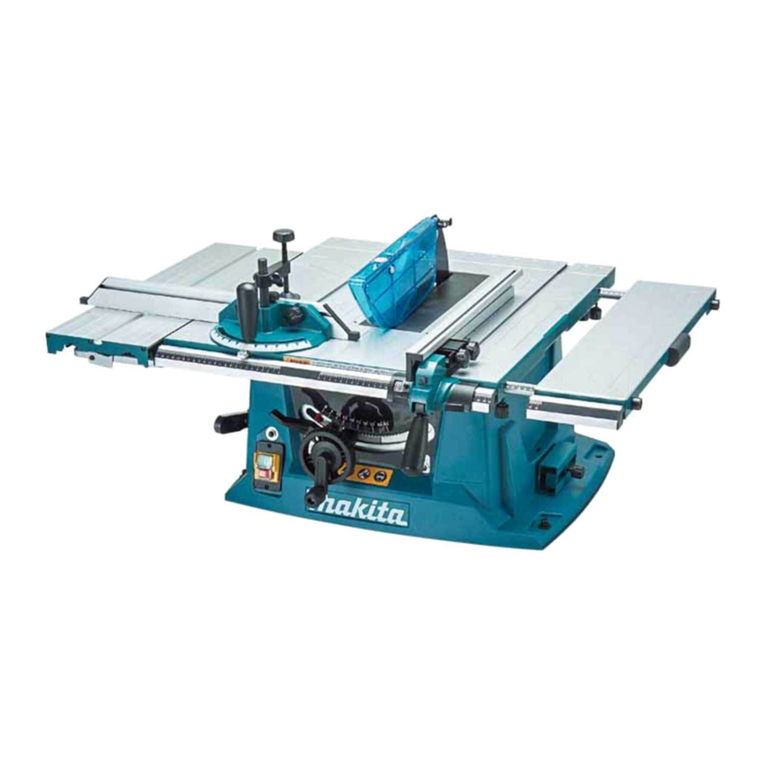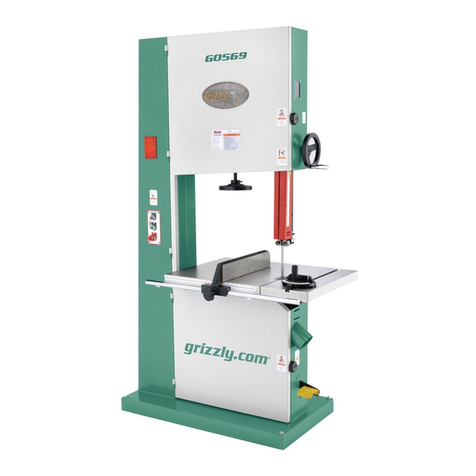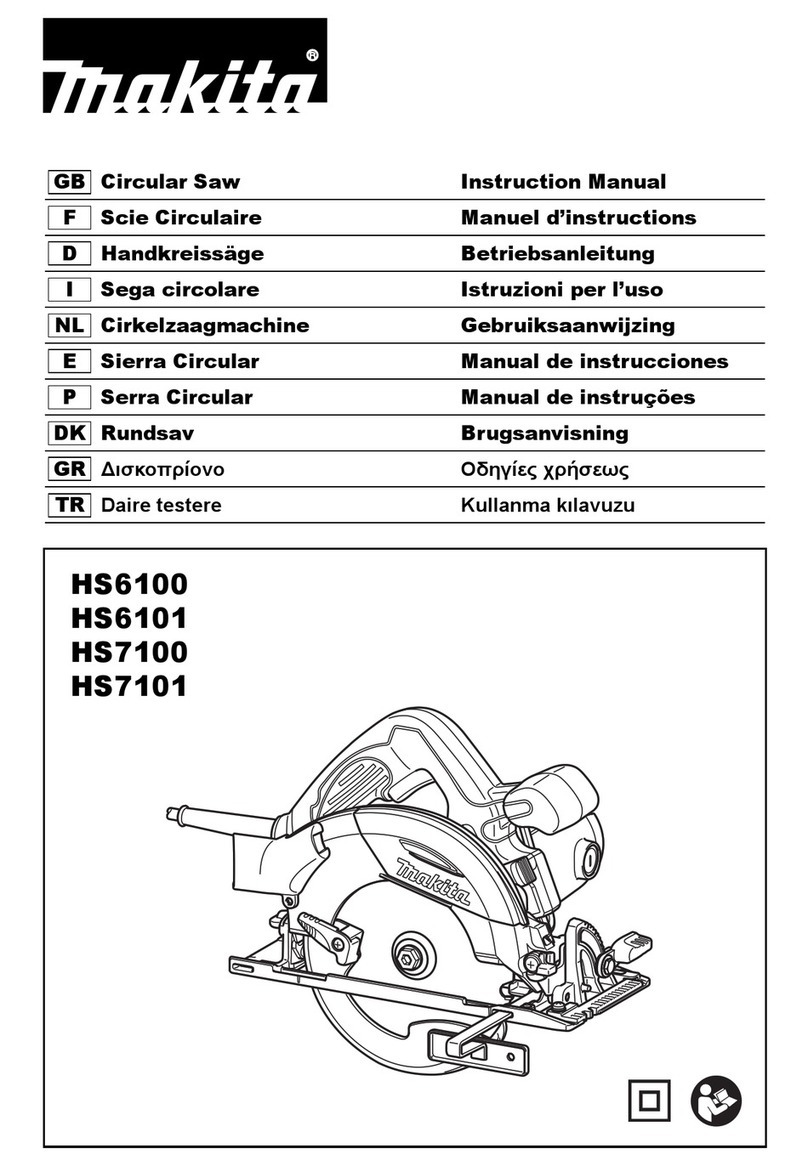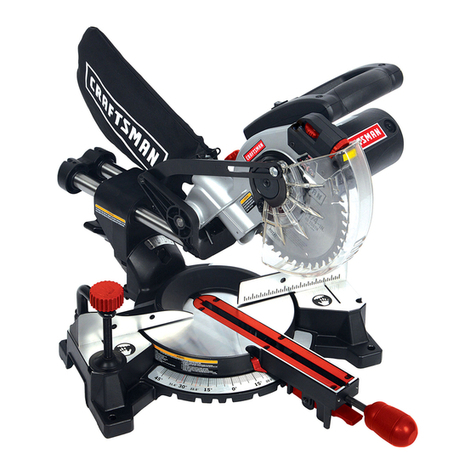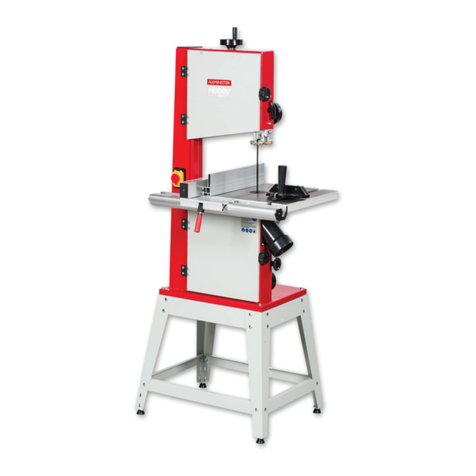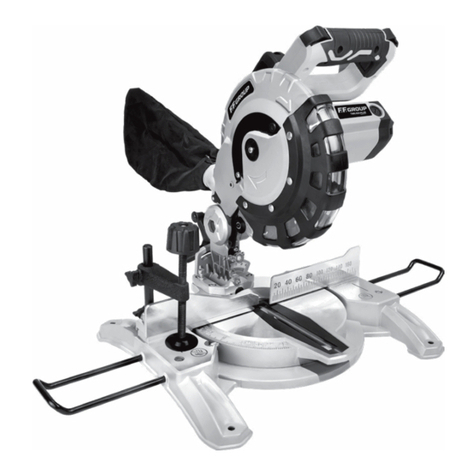Sovereign J1X-HZ02-210K User guide

1450W MITRE SAW
Item No. 594455
Model No. J1X-HZ02-210K
HHGL Limited, MK9 1BA; HHGL (ROI) Lim ited, D02 X576 Mar 21
ORIGINAL INSTRUCTION MANUAL
Please read these instructions fully before starting assembly.
www.coreservice.co.uk
Technical Support & Parts
01904 727509
Mon-Fri 9am-5pm Sat-Sun 11am-4pm

2
CONTENTS
Contents 2
General safety warnings 3
Warning symbols 16
In the box 17
Assembly 19
Before operation 24
Operation 27
Maintenance and storage 34
Technical data 35
Recycling and disposal 36
UK plug 36
Getting help 37
Warranty 37

3
GENERAL SAFETY INFORMATION
WARNING! Read all safety warnings,
provided with this power tool.
Failure to follow all instructions listed below
injury.
Save all warnings and instructions for future
reference.
The term "power tool" in the warnings refers to your
mains-operated (corded) power tool or battery-
operated (cordless) power tool.
1) Work area safety
a. Keep work area clean and well lit. Cluttered or
dark areas invite accidents.
b. Do not operate power tools in explosive
atmospheres, such as in the presence of
flammable liquids, gases or dust. Power tools
create sparks which may ignite the dust or fumes.
c. Keep children and bystanders away while
operating a power tool. Distractions can cause
you to lose control.
2) Electrical safety
a. Power tool plugs must match the outlet. Never
modify the plug in any way. Do not use any
adaptor plugs with earthed (grounded) power

4
tools. Unmodified plugs and matching outlets will
reduce risk of electric shock.
b. Avoid body contact with earthed or grounded
surfaces, such as pipes, radiators, ranges and
refrigerators. There is an increased risk of electric
shock if your body is earthed or grounded.
c. Do not expose power tools to rain or wet
conditions. Water entering a power tool will
increase the risk of electric shock.
d. Do not abuse the cord. Never use the cord for
carrying, pulling or unplugging the power tool.
Keep cord away from heat, oil, sharp edges
or moving parts. Damaged or entangled cords
increase the risk of electric shock.
e. When operating a power tool outdoors, use an
extension cord suitable for outdoor use. Use of
a cord suitable for outdoor use reduces the risk of
electric shock.
f. If operating a power tool in a damp location
is unavoidable, use a residual current device
(RCD) protected supply. Use of an RCD reduces
the risk of electric shock.
3) Personal safety
a. Stay alert, watch what you are doing and
use common sense when operating a power
tool. Do not use a power tool while you are
tired or under the influence of drugs, alcohol

5
or medication. A moment of inattention while
operating power tools may result in serious
personal injury.
b. Use personal protective equipment. Always
wear eye protection. Protective equipment, such
as a dust mask, non-skid safety shoes, hard hat, or
hearing protection used for appropriate conditions
will reduce personal injuries.
c. Prevent unintentional starting. Ensure the
switch is in the 'off' position before connecting
to power source and/or battery pack, picking
up or carrying the tool. Carrying power tools
with your finger on the switch or energising power
tools that have the switch on invites accidents.
d. Remove any adjusting key or wrench before
turning the power tool on. A wrench or a key left
attached to a rotating part of the power tool may
result in personal injury.
e. Do not overreach. Keep proper footing and
balance at all times. This enables better control
of the power tool in unexpected situations.
f. Dress properly. Do not wear loose clothing or
jewellery. Keep your hair, clothing and gloves
away from moving parts. Loose clothes, jewellery
or long hair can be caught in moving parts.
g. If devices are provided for the connection of
dust extraction and collection facilities, ensure
these are connected and properly used. Use of
these devices can reduce dust-related hazards.

6
h. Do not let familiarity gained from frequent use
of tools allow you to become complacent and
ignore tool safety principles. A careless action
can cause severe injury within a fraction of a
second.
4) Power tool use and care
a. Do not force the power tool. Use the correct
power tool for your application. The correct
power tool will do the job better and safer at the
rate for which it was designed.
b. Do not use the power tool if the switch does
not turn it on and off. Any power tool that cannot
be controlled with the switch is dangerous and
must be repaired.
c. Disconnect the plug from the power source
and/or the battery pack from the power tool
before making any adjustments, changing
accessories, or storing power tools. Such
preventive safety measures reduce the risk of
starting the power tool accidentally.
d. Store idle power tools out of the reach of
children and do not allow persons unfamiliar
with the power tool or these instructions
to operate the power tool. Power tools are
dangerous in the hands of untrained users.
e. Maintain power tools. Check for misalignment
or binding of moving parts, breakage of parts
and any other condition that may affect the
power tool’s operation. If damaged, have the

7
power tool repaired before use. Many accidents
are caused by poorly maintained power tools.
f. Keep cutting tools sharp and clean. Properly
maintained cutting tools with sharp cutting edges
are less likely to bind and are easier to control.
g. Use the power tool, accessories and tool bits,
etc., in accordance with these instructions,
taking into account the working conditions and
the work to be performed. Use of the power tool
for operations different from those intended could
result in a hazardous situation.
h. Keep handles and gripping surfaces dry, clean
and free from oil and grease. Slippery handles
and gripping surfaces do not allow for safe
handling and control of the tool in unexpected
situations.
Service
a) Have your power tool serviced by a qualified
repair person using only identical replacement
parts. This will ensure that the safety of the power
tool is maintained.

8
SAFETY INSTRUCTIONS FOR MITRE SAWS
a. Mitre saws are intended to cut wood or wood-
like products, they cannot be used with
abrasive cut-off wheels for cutting ferrous
material, such as bars, rods, studs, etc. Abrasive
dust causes moving parts, such as the lower guard,
to jam. Sparks from abrasive cutting will burn the
lower guard, the kerf insert and other plastic parts.
b. Use clamps to support the workpiece whenever
possible. If supporting the workpiece by hand,
you must always keep your hand at least 10cm
from either side of the saw blade. Do not use
this saw to cut pieces that are too small to be
securely clamped or held by hand. If your hand
is placed too close to the saw blade, there is an
increased risk of injury from blade contact.
c. The workpiece must be stationary and clamped
or held against both the fence and the table.
Do not feed the workpiece into the blade or cut
“freehand” in any way. Unrestrained or moving
workpieces could be thrown at high speeds,
causing injury.
d. Push the saw through the workpiece. Do not
pull the saw through the workpiece. To make a
cut, raise the saw head and pull it out over the
workpiece without cutting; start the motor,
press the saw head down and push the saw
through the workpiece. Cutting on the pull
stroke is likely to cause the saw blade to climb on
top of the workpiece and violently throw the blade
assembly towards the operator.

9
e. Never cross your hand over the intended line
of cutting either in front or behind the saw
blade. Supporting the workpiece “cross handed”
i.e. holding the workpiece to the right of the saw
blade with your left hand or vice versa is very
dangerous.
f. Do not reach behind the fence with either hand
closer than 100mm from either side of the
saw blade, to remove wood scraps, or for any
other reason while the blade is spinning. The
proximity of the spinning saw blade to your hand
may not be obvious and you may be seriously
injured.
g. Inspect your workpiece before cutting. If the
workpiece is bowed or warped, clamp it with
the outside bowed face towards the fence.
Always make certain that there is no gap
between the workpiece, fence and table along
the line of the cut. Bent or warped workpieces
can twist or shift and may cause binding on the
spinning saw blade while cutting. There should be
no nails or foreign objects in the workpiece.
h. Do not use the saw until the table is clear
of all tools, wood scraps, etc., except for the
workpiece. Small debris or loose pieces of wood
or other objects that contact the revolving blade
can be thrown at high speed.
i. Cut only one workpiece at a time. Stacked
multiple workpieces cannot be adequately
clamped or braced and may bind on the blade or
shift during cutting.

10
j. Ensure the mitre saw is mounted or placed on
a level, firm work surface before use. A level
and firm work surface reduces the risk of the mitre
saw becoming unstable.
k. Plan your work. Every time you change the
bevel or mitre angle setting, make sure the
adjustable fence is set correctly to support the
workpiece and will not interfere with the blade
or the guarding system. Without turning the tool
“ON” and with no workpiece on the table, move
the saw blade through a complete simulated cut
to assure there will be no interference or danger
of cutting the fence.
l. Provide adequate support such as table
extensions, saw horses, etc., for a workpiece
that is wider or longer than the table top.
Workpieces longer or wider than the mitre saw
table can tip if not securely supported. If the cut-
off piece or workpiece tips, it can lift the lower
guard or be thrown by the spinning blade.
m.Do not use another person as a substitute for
a table extension or as additional support.
Unstable support for the workpiece can cause the
blade to bind or the workpiece to shift during the
cutting operation, pulling you and the helper into
the spinning blade.
n. The cut-off piece must not be jammed or
pressed by any means against the spinning saw
blade. If confirmed, i.e. using length stops, the cut-
off piece could get wedged against the blade and
thrown violently.

11
o. Always use a clamp or a fixture designed to
properly support round materials, such as rods
or tubing. Rods have a tendency to roll while
being cut, causing the blade to “bite” and pull the
work with your hand into the blade.
p. Let the blade reach full speed before contacting
the workpiece. This will reduce the risk of the
workpiece being thrown.
q. If the workpiece or blade becomes jammed,
turn the mitre saw off. Wait for all moving
parts to stop and disconnect the plug from
the power source and/or remove the battery
pack. Then work to free the jammed material.
Continued sawing with a jammed workpiece could
cause loss of control or damage to the mitre saw.
r. After finishing the cut, release the switch, hold
the saw head down and wait for the blade
to stop before removing the cut-off piece.
Reaching with your hand near the coasting blade
is dangerous.
s. Hold the handle firmly when making an
incomplete cut or when releasing the switch
before the saw head is completely in the down
position. The braking action of the saw may cause
the saw head to be suddenly pulled downward,
causing a risk of injury.

12
BLADE SAFETY
WARNING! Rotating saw blades are
extremely dangerous and can cause serious
and hands at least 150mm (6”) away from
the blade at all times. Never attempt to
retrieve sawn material until the cutting
head is in the raised position, the guard is
fully closed and the saw blade has stopped
rotating. Only use saw blades that are
recommended by the manufacturer and
as detailed in this manual and that comply
with the requirements of EN 847-1.
a) Only use the manufactured blades rated for this
machine.
b) Do not use saw blades that are damaged or
deformed, as they could shatter and cause serious
injury to the operator or bystanders.
c) If the table insert becomes damaged or worn, it
must be replaced with an identical one available
from the manufacturer.
PERSONAL PROTECTIVE EQUIPMENT (PPE)
Hearing protection should beworn in order to reduce
the risk of induced hearing loss.
Eye protection should be worn in order to prevent
the possibility of the loss of sight from ejected
chippings.

13
Respiratory protection is also advised, as some wood
and wood-type products especially MDF (Medium
Density Fibreboard) can produce dust that can be
hazardous to your health. We recommend the use
of an approved face mask with replaceable filters
when using this machine in addition to using the dust
extraction facility.
Gloves should be worn when handling blades or
rough material. It is recommended that saw blades
should be carried in a holder, wherever practicable.
It is not advisable to wear gloves when operating the
mitre saw.
OPERATION SAFETY
a. Use only saw blades recommended by the
manufacturer for wood and analogous
materials.
b. Pay attention to the cutting capacities
mentioned in the technical data.
c. Pay attention to the maximum bevel angle and
mitre angle settings mentioned in thetechnical
data.
d. Use only a saw blade diameter in accordance
with the markings on the saw and information
about the bore diameter and the maximum
kerf of the saw blade.
e. Use only saw blades that are marked with a
speed equal or higher than the speed marked
on the tool.

14
f. During the blade changing procedure, the
rotation direction arrow on the saw blade
should comply with the one on the upper fixed
blade guard.
g. Pay attention to the setting device(s) and the
locking device(s) for the mitre angle and bevel
angle mentioned in the controls.
h. Turn the lower retractable blade guard by hand
to test if it is rotating smoothly.
i. Pay attention to how to connect the dust
extraction systems mentioned in the assembly.
j. Pay attention to the cutting sequence
mentioned in the operation.
k. Pay attention to the cutting depth for non-
through cuts mentioned in the controls.
l. Ensure that the mitre saw is always stable and
secure.
m.Always fix and use the extension supporter
during operation.
n. Use additional supports if needed to ensure
the stability of the workpiece.
o. The power tool shall not be wet or applied in a
wet environment.
p. Check the product, its power cord and plug,
as well as accessories for damage before each
use. Do not use the product if it is damaged or
shows wear.
q. Double check that the accessories and
attachments are properly fixed.

15
r. Always hold the product by its handle. Keep the
handle dry to ensure safe support.
s. Ensure that the air vents are always
unobstructed and clear. If necessary, clean them
with a soft brush. Blocked air vents may lead to
overheating and damage the product.
t. Switch the product off immediately if you
are disturbed while working by other people
entering the working area. Always let the
product come to complete stop before putting
it down.
u. Do not overwork yourself. Take regular breaks to
ensure you can concentrate on the work and have
full control over the product.
RESIDUAL RISKS
Even if you are operating this product in
accordance with all the safety requirements,
potential risks of injury and damage remain. The
following dangers can arise in connection with
the structure and design of this product:
1. Health defects resulting from vibration emission if
the product is being used over long periods of time
or not adequately managed and properly maintained.
2. Injuries and damage to property due to broken
attachments or the sudden impact of hidden objects
during use.
3. Danger of injury and property damage caused by
flying objects or poor power tool accessories.

16
WARNING SYMBOLS
Warning!
Read the instructions
Wear ear protection
Wear eye protection
Wear a dust mask
Class II tool
The product complies with the applicable European
directives, and an evaluation method of conformity
for these directives was done.
Recycle unwanted materials instead of disposing
of them as household waste. All tools, hoses
and packaging should be sorted, taken to the
local recycling centre and disposed of in an
environmentally safe way.
Do not touch, danger area! Keep hands, fingers
and arms from this area.
The product complies with the applicable UK
directives, and an evaluation method of conformity
for these directives was followed.

17
IN THE BOX
16
17
19
20
23
22
21
11
1
2
3
4
5
6
7
8
12
10
15
14
15b
13
18
24
25 16c

18
Descriptions
1. Operating handle
2. Retractable blade guard release lever
3. Upper fixed blade guard
4. Spindle lock button
5. Guard mounting plate
6. Lower retractable blade guard
7. Saw blade
8. Fence
9. Bevel scale
a. scale indicator
10.Mounting hole
11.Mitre scale
12.Table insert
13.Turntable
14.Base
15.Support assembly
b. Support extension
16.Screw clamp
c. Height adjustment pillar
17.Fence extension
18.Power cord with plug
19.Bevel locking mechanism
20.Locking bolt
21.Chip ejector opening
22.Chip collection bag
23.Transport handle
24.
25.Turntable locking knob

19
ASSEMBLY
Warning! Avoid starting the mitre saw
unintentionally. Always disconnect the
mains plug from the power supply before
assembly or when carrying out any kind of
work on your mitre saw.
1. ASSEMBLE THE TRANSPORT HANDLE
Align the mounting holes and assemble the transport handle
(23). Secure the transport handle (23) in position with the
screws.
2. DUST EXTRACTION PORT (SEE FIG. 1)
To reduce buildup of saw dust and maintain the cutting
efficiency, saw dust collection can be achieved by connecting
a vacuum dust collector or cleaner to the dust extraction port.
Alternatively, a dust bag is provided for use on your mitre saw.
To install it, hold the dust bag by depressing both sides of
the metal ring clip, locate onto the dust extraction port, then
you can loosen the ring clip. Ensure the dust bag is securely
fastened before operating the saw.
To empty the dust bag, remove it from the dust extraction
port, and open the dust bag by unzipping the slide fastener.
NOTE: To ensure optimal dust collecting, empty the dust bag

20
3. SIDE TABLE EXTENSIONS (SEE FIG. 2-7)
Long workpieces require extra supports. The supports should
be placed along the workpiece so it does not sag. The support
should allow the workpiece to lay flat on the base of the saw
and work table during the cutting operation. Use the work
clamp to secure the workpiece.
This mitre saw is provided with extension bars for both sides,
and a brace for only one side. To install the side extension
bars (left & right) and the brace, follow the below instructions:
1) Loosen the screw on the side of the brace by turning it anti-
clockwise. (See Fig. 2)
2) Attach the extension bar with the brace, as shown in Fig. 3.
Insert one end of the rail into the hole of the brace, the other
end into the notch of the brace.
This manual suits for next models
1
Table of contents


